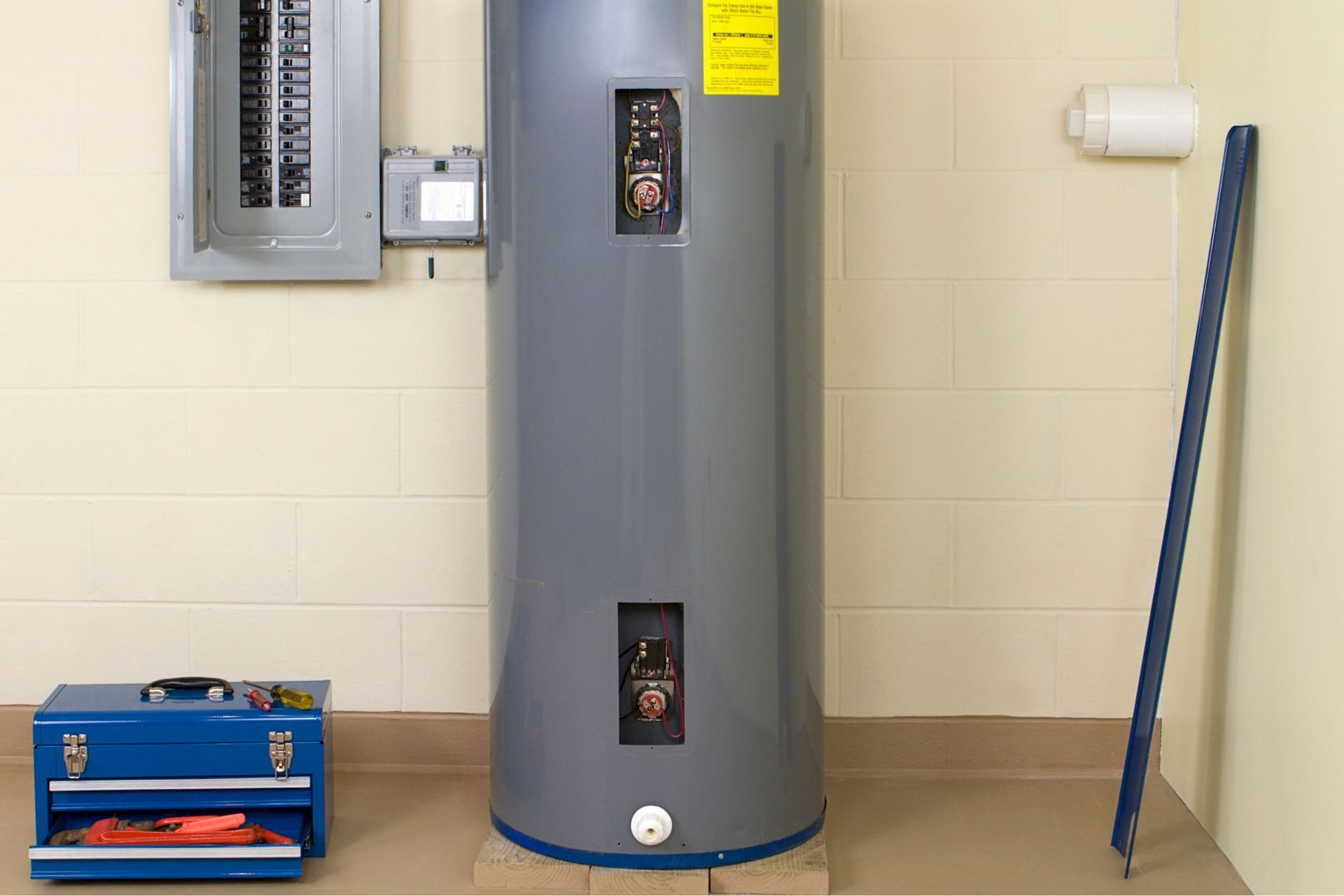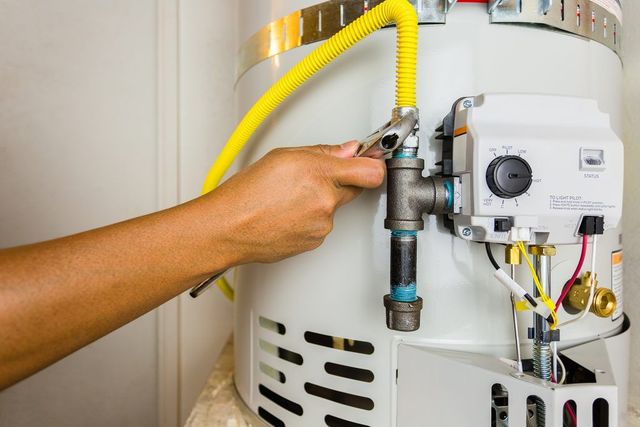Professional Tips on Maintaining Your Home's Hot Water SystemProfessional Tips for Maintaining Your Home's Hot Water SystemSteps to Properly Maintain Your Home's Hot Water System
Professional Tips on Maintaining Your Home's Hot Water SystemProfessional Tips for Maintaining Your Home's Hot Water SystemSteps to Properly Maintain Your Home's Hot Water System
Blog Article
We have stumbled on the article involving How to Maintain a Hot Water Heater in a Few Simple Steps below on the internet and reckoned it made good sense to relate it with you on my blog.

Warm water is necessary for day-to-day comfort, whether it's for a rejuvenating shower or cleaning dishes. To ensure your warm water system runs successfully and lasts longer, regular maintenance is crucial. This post gives practical suggestions and understandings on just how to keep your home's warm water system to avoid disturbances and pricey repairs.
Introduction
Preserving your home's hot water system may appear overwhelming, however with a couple of straightforward actions, you can guarantee it runs efficiently for several years to come. This guide covers whatever from comprehending your warm water system to DIY maintenance ideas and understanding when to call professional help.
Significance of Preserving Your Hot Water System
Regular maintenance not just prolongs the life expectancy of your hot water system but also ensures it runs successfully. Ignoring upkeep can bring about lowered effectiveness, higher energy bills, and also early failure of the system.
Indicators Your Warm Water System Requirements Maintenance
Knowing when your warm water system requires interest can prevent major issues. Keep an eye out for indicators such as irregular water temperature, strange sounds from the heating unit, or corroded water.
Flushing the Water Heater
Purging your hot water heater removes debris build-up, enhancing efficiency and lengthening its life.
Monitoring and Replacing Anode Rods
Anode rods protect against rust inside the tank. Evaluating and changing them when broken is vital.
Complicated Issues Needing Professional Aid
Examples include major leakages, electrical troubles, or if your water heater is continually underperforming.
Regular Specialist Maintenance Perks
Expert maintenance can consist of detailed assessments, tune-ups, and guaranteeing compliance with security standards.
Inspecting and Adjusting Temperature Level Setups
Changing the temperature setups guarantees optimum performance and safety.
DIY Tips for Upkeep
You can execute numerous maintenance jobs yourself to maintain your warm water system in top problem.
Checking for Leakages
On a regular basis inspect pipelines and links for leaks, as these can cause water damage and greater bills.
Comprehending Your Warm Water System
Before diving into upkeep tasks, it's valuable to understand the fundamental parts of your hot water system. Normally, this consists of the water heater itself, pipes, anode poles, and temperature controls.
Regular Monthly Upkeep Tasks
Regular regular monthly checks can aid capture minor problems prior to they escalate.
Evaluating Stress Relief Valves
Checking the pressure relief valve ensures it functions properly and stops too much stress build-up.
Protecting Pipelines
Shielding warm water pipelines reduces heat loss and can conserve energy.
When to Call an Expert
While do it yourself upkeep is valuable, some issues require professional know-how.
Verdict
Regular maintenance of your home's warm water system is vital for performance, long life, and price financial savings. By following these suggestions and understanding when to look for specialist assistance, you can ensure a reliable supply of warm water without unforeseen disturbances.
Water Heater Maintenance: The Basics
Maintaining your water heater will ensure it operates efficiently and has a longer lifespan. Neglecting regular maintenance can lead to costly repairs and an even bigger chunk of your savings if you have to replace it sooner than necessary. But there’s good news: Most water heater maintenance tasks are relatively simple and easy for homeowners with basic DIY skills.
Flush the Water Heater
Over time, sediment and minerals can build up in the tank, reducing its efficiency and potentially causing damage. To flush the tank, turn off the power or gas supply, attach a hose to the drain valve near the bottom and open the valve to drain the water until it runs clear. Ideally, flush the tank annually.
Replace the Anode Rod
The anode rod is a sacrificial metal rod that helps prevent corrosion inside the tank. Inspect and replace it every three to five years or per the manufacturer's recommendation. To replace the anode rod, turn off the power or gas supply, drain a few gallons of water from the tank, unscrew the old rod and replace it with a new one. If the anode rod is significantly corroded or covered in calcium buildup, it's a sign the water heater may need to be replaced soon.
Tune-Up
A yearly tune-up can help identify potential issues and ensure your water heater operates at peak efficiency. This typically involves checking the thermostat, burner assembly (for gas heaters) and any other components specified by the manufacturer. During a tune-up, the technician may also clean the burner and adjust the pilot light (for gas heaters) or examine the heating elements (for electric heaters).
How to Maintain Your Water Heater
Insulate the tank. Insulating the tank can improve energy efficiency and reduce heat loss, saving you money on energy bills. You can purchase precut insulation blankets designed specifically for water heaters or use standard fiberglass insulation wrapped securely around the tank. Check the temperature. The recommended water temperature for most households is around 120 degrees Fahrenheit (49 degrees Celsius). Higher temperatures can increase energy costs and potentially cause scalding. Use a kitchen thermometer to check the temperature at the faucet nearest the water heater. Monitor water pressure. Excessive water pressure can strain the water heater and cause leaks or even tank failure. Install a pressure-reducing valve if necessary. The ideal water pressure range is between 60 and 70 PSI (pounds per square inch). Test the temperature and pressure (T&P) relief valve. The T&P relief valve is a safety feature that releases pressure if the tank gets too hot or the pressure builds up too high. Test it annually by lifting the lever and allowing a small amount of water to release. Replace the valve if it doesn't release water or reseal properly. Check for leaks. Regularly inspect the tank, pipes and fittings for leaks or corrosion. Deal with issues promptly to prevent further damage. Even a small leak can lead to significant water damage over time. Consider a tankless water heater. If your traditional tank-style water heater is nearing the end of its lifespan ( typically 10 years), consider replacing it with a tankless water heater. These units heat water on demand, reducing standby energy losses and potentially saving you money on your energy bills. Schedule professional maintenance. While homeowners can perform many water heater maintenance tasks, it's still a good idea to schedule professional maintenance every few years. A plumber or HVAC technician can thoroughly inspect the unit, identify potential issues and ensure it operates safely and efficiently. https://www.homeserve.com/en-us/blog/home-improvement/hot-water-heater-maintanence/

I hope you enjoyed our part on Tips For Maintaining Your Hot Water Heater. Thank you for taking time to read through our blog post. Please take the opportunity to promote this blog entry if you appreciated it. We recognize the value of your readership.
Schedule Service Report this page